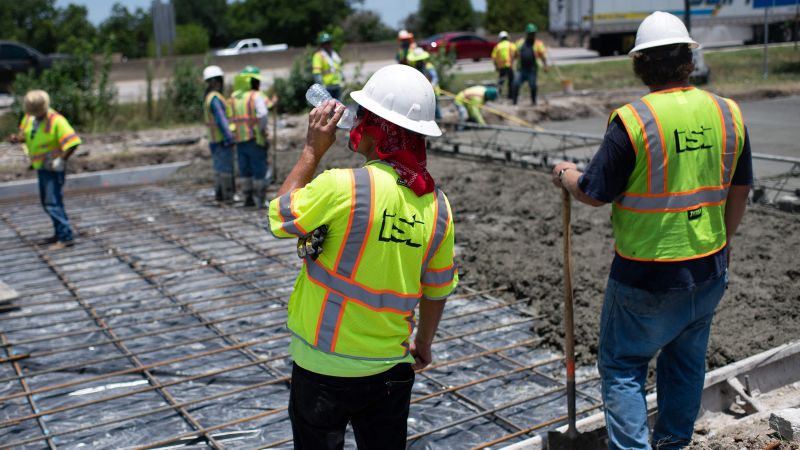Esteban Wood, the policy director at WeCount!, was inspired to create the “¡Que Calor!” campaign after learning about the case of Jose Delgado, a Mexican farmer who suffered from kidney damage after collapsing from extreme heat. The campaign aimed to have employers grant farmworkers breaks during intense heat through education, outreach, and workshops. However, state lawmakers in states like Florida and Texas have passed laws prohibiting local governments from enforcing heat protection rules for outdoor workers, putting the health and safety of thousands of workers at risk.
In Florida, House Bill 433 went into effect in July, prohibiting local governments from mandating businesses provide heat protections for outdoor workers. Similarly, Texas enacted House Bill 2127 in 2023, restricting local municipalities from adopting ordinances related to heat protection rules. The reasoning behind these laws is to provide job creators with regulatory consistency across the state to focus on growing their businesses. However, activists and worker advocacy groups argue that the lack of heat protections puts workers’ lives in danger, especially as temperatures continue to rise due to climate change.
While some states like California, Colorado, Minnesota, and Washington have heat protections for workers, they are not uniform or comprehensive. The lack of consistency among local, state, and federal laws creates challenges for workers seeking protection from extreme heat. Texas cities have sued the state over the “Death Star” bill, arguing that it impedes home rule, but the law remains in effect as the state appeals the ruling. The lack of a national heat safety standard for workers, both indoor and outdoor, contributes to the high number of heat-related injuries and deaths among outdoor workers.
The Union of Concerned Scientists reports that outdoor workers are 35 times more likely to die from heat exposure than the general public, highlighting the urgent need for heat protections. In response to rising temperatures, the Department of Labor and the Biden administration proposed a rule to safeguard indoor and outdoor workers from extreme heat, although it may take years to go into effect. Worker advocacy groups are pushing for wage protections alongside heat protections to address the financial incentives that drive workers to continue working in unsafe conditions.
The issue of heat protections for outdoor workers is exacerbated by the financial incentives involved in outdoor work, leading some workers to prioritize income over their health. Dr. Kristina Dahl, a climate scientist, emphasizes the importance of wage protections in conjunction with heat protections, as some workers are paid based on productivity rather than hourly rates. Workers like Veronica Carrasco, a Honduran subcontractor living in Dallas, face challenges in getting rest breaks on the job. Carrasco is the primary breadwinner for her family and often feels pressured to continue working in extreme heat without sufficient breaks, risking heat sickness or worse.
Carrasco and other workers in industries like construction are calling on elected officials and regulatory agencies to work with employers to implement best practices for protecting outdoor workers from extreme heat. The lack of rest breaks and water access in physically demanding jobs puts workers at risk of heat-related illnesses and injuries. Addressing the issue of heat protections requires a multi-faceted approach that includes regulatory changes, education, and cooperation between stakeholders to ensure the safety and well-being of outdoor workers.













